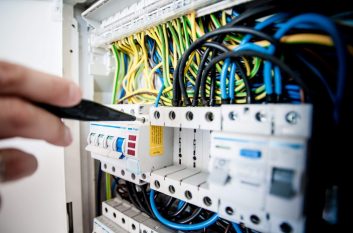Cybersecurity
For anyone who’s ever had their personal information hacked, you know it can be one of the worst situations. To make sure this doesn’t happen to you, all the products you own that are connected to the web, and each other, need to be secure and up to date. While there are many rules to follow when it comes to keeping your connected devices safe from harmful hacks, here are a few tips to prevent your network from being the next Mirai in the IoT Botnet Crisis.
Tip #1 Adopt Best Password Practices
Unique passwords are a must when it comes to securing your IoT connected devices and networks. According to the U.S. Department of Justice’s Consumer Technology Association, there are many ways to ensure that your passwords are difficult to guess. When setting up a password, make sure that there is no information on the internet or your social media that could give clues to what it is. Avoid incorporating any personal information and consider using a two-step authorization with multiple passwords for each device. While that might seem like a little much, it’s better to be safe than sorry when it comes to your internet protection.
Tip #2 Firewalls are Essential
No matter whether the device is for business, or you plan on using it for personal reasons, always remember to secure all your devices to avoid a single point of weakness. Through the use of anti-virus and intrusion detection products that protect laptops, computers, and other internet products, your network will be safe from intrusion.
Remember to immediately secure your new devices upon purchase. That way, they will be ready for connection as soon as possible and you won’t forget to secure them at a later date. It is not enough to solely protect your devices, make sure to set up a firewall to your routers as well. The U.S. Department of Justice explains, a good rule of thumb is to secure everything and anything connected to the internet or connected to each other.
Tip #3 Update your Device Whenever there’s a New Firmware
Updating your firmware is extremely important when it comes to preventing hacks on your connected devices. Every device has software on it called firmware, and it is susceptible to break-ins if it is not regularly updated and secured. To help make sure you never miss an update, consider registering your device for automated firmware updates that are usually offered through the manufacturer. If they don’t offer automatic updates, check the manufacturer website for any announcements from time-to-time. That way, you’ll always know that your devices are running on the best and most secure firmware.
There are many ways to protect your network, but just securing your devices with a password isn’t enough. While these are only a few precautions one can take, the U.S. Department of Justice has a list of tips that both business networks and personal networks can follow to their advantage. When setting up a new network, or incorporating new devices into a current one, remember to protect all devices, use up to date programs, and clever passwords.







